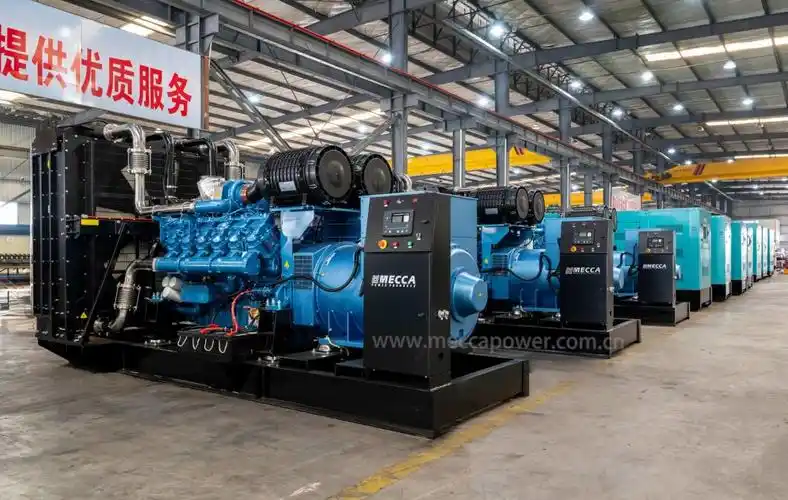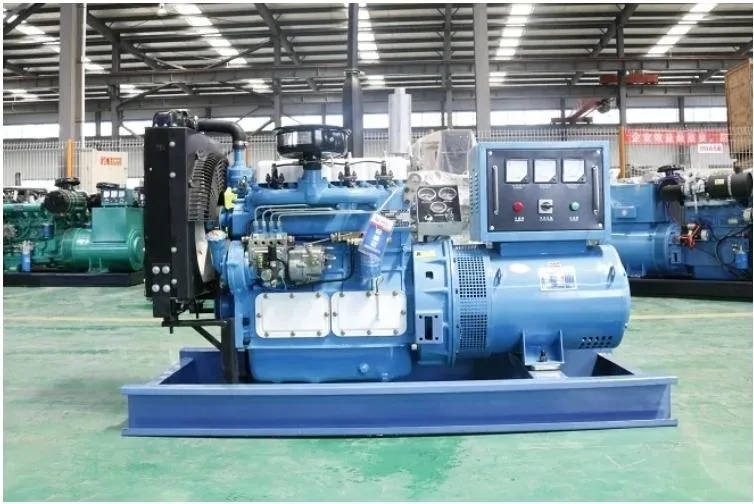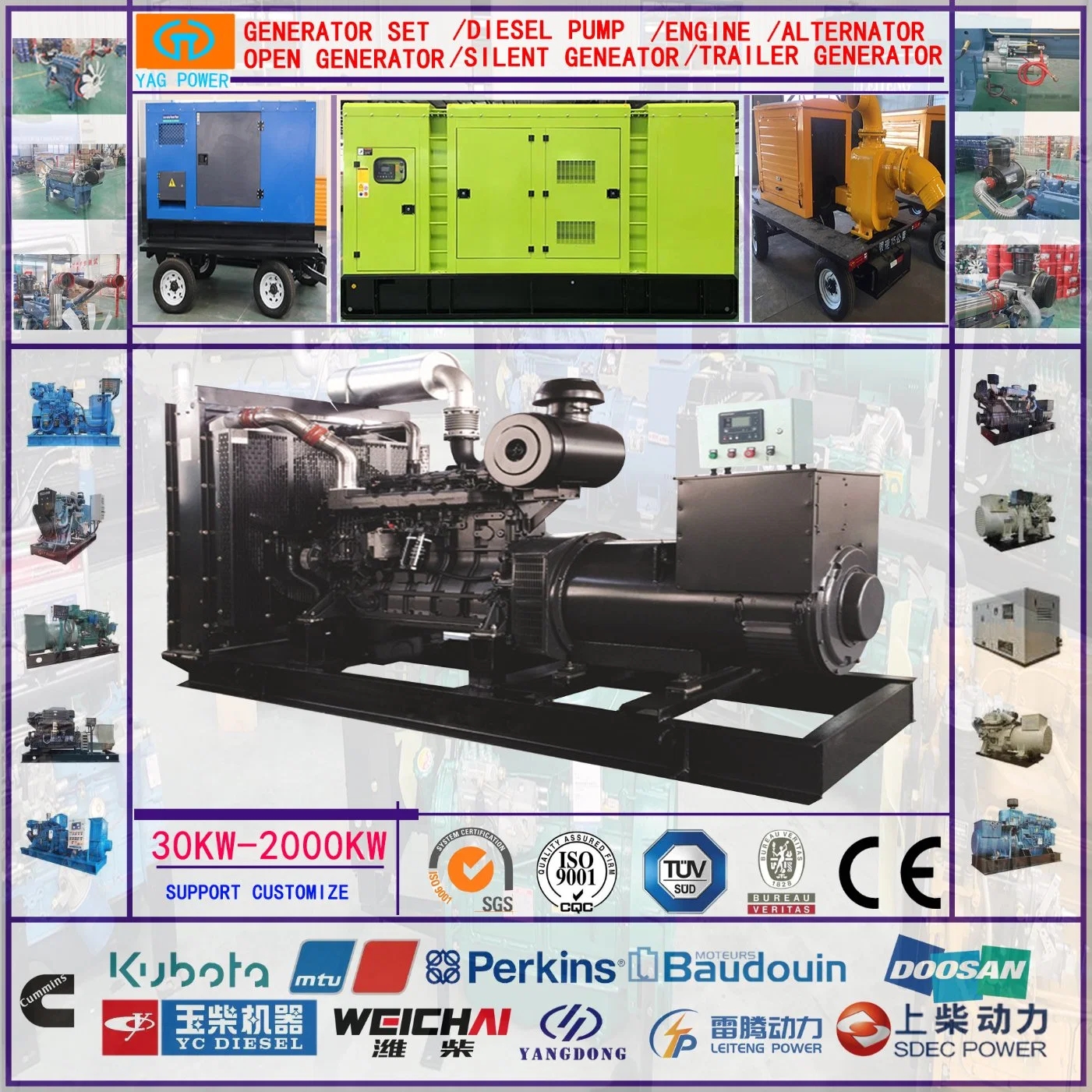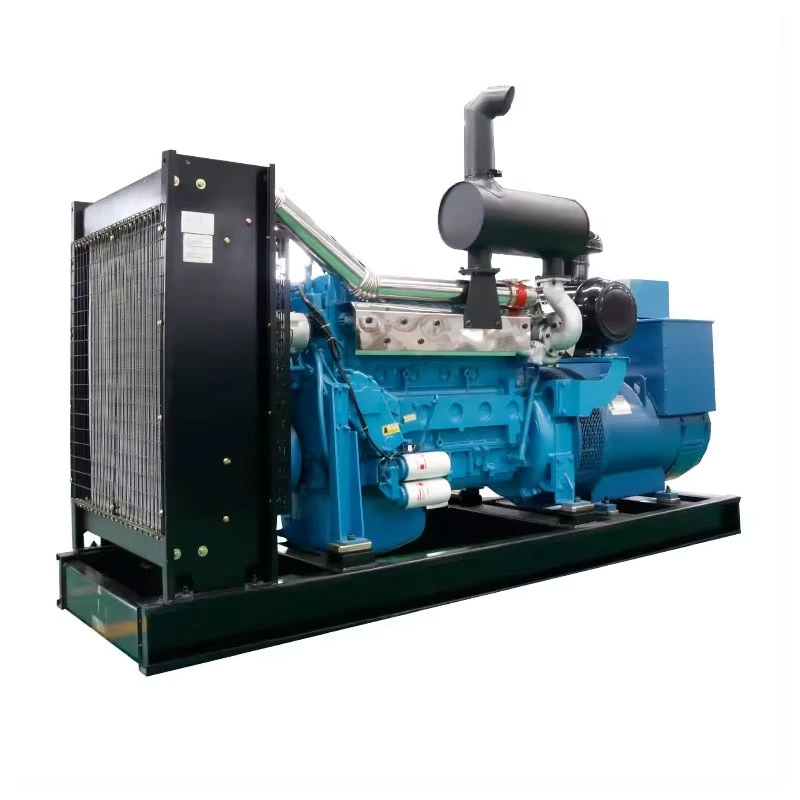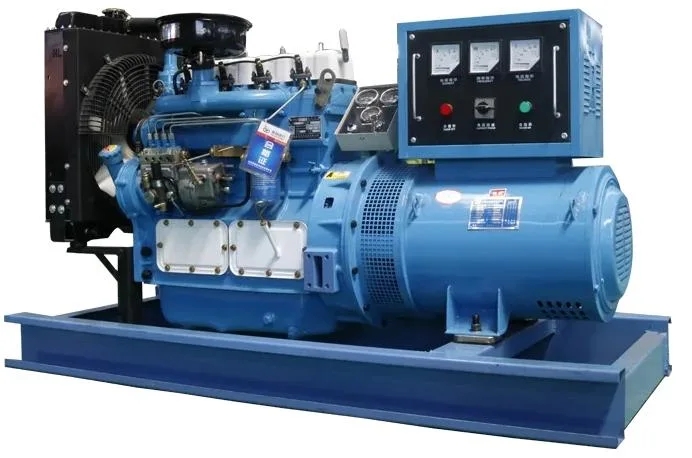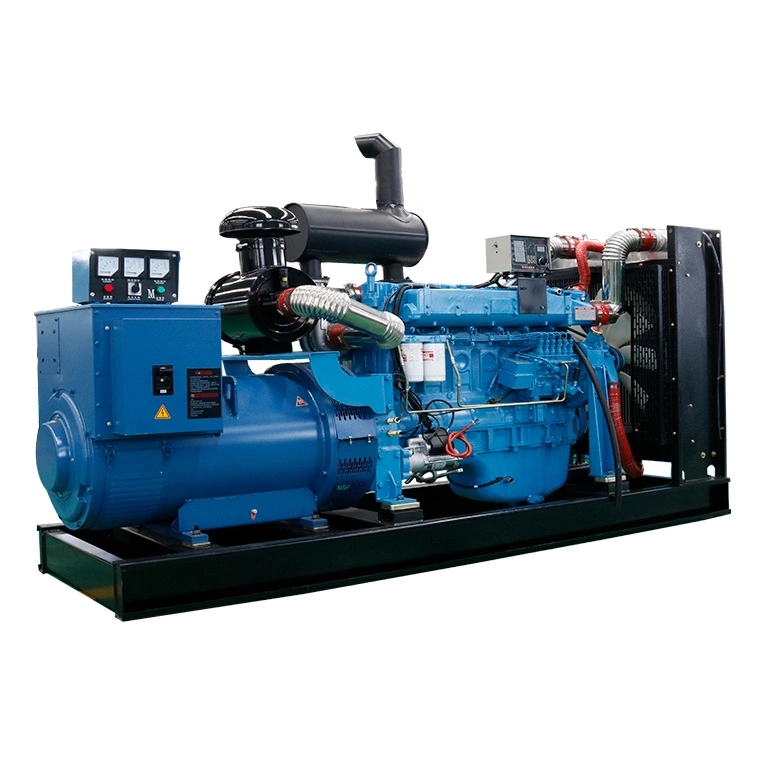Table of Contents
ToggleIn an era where uninterrupted power supply is critical for industries, businesses, and even households, diesel generator sets have emerged as a reliable solution for backup and primary power needs. These robust machines combine diesel engines with electric generators to convert mechanical energy into electrical energy, offering a dependable source of electricity in diverse scenarios. This article explores the mechanics of diesel generator sets, their applications, advantages, maintenance requirements, and their evolving role in a world increasingly focused on sustainability.
What Is a Diesel Generator Set?
A diesel generator set (often abbreviated as a “genset”) is a standalone system comprising a diesel engine and an alternator (generator) designed to produce electricity. The diesel engine burns fuel to generate mechanical energy, which the alternator then converts into electrical energy through electromagnetic induction. Diesel gensets are available in a wide range of power outputs, from small portable units (5–30 kVA) to industrial-scale systems exceeding 3,000 kVA. Their modular design allows them to be customized for specific voltage, frequency, and power requirements.
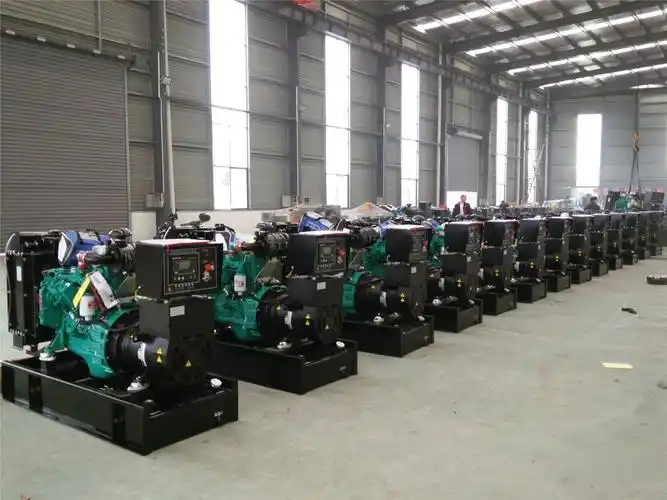
How Does a Diesel Generator Set Work?
The operation of a diesel generator set hinges on the interplay between its core components:
- Diesel Engine: The engine compresses air in its cylinders, raising the temperature to a point where injected diesel fuel ignites spontaneously (compression ignition). This combustion drives pistons, creating rotational motion.
- Alternator: Connected to the engine via a shaft, the alternator uses rotating magnetic fields (rotor) and stationary wire windings (stator) to induce an alternating current (AC).
- Fuel System: Stores and delivers diesel to the engine. Modern systems include filters and injectors for optimized combustion.
- Cooling and Exhaust Systems: Prevent overheating and expel combustion byproducts.
- Control Panel: Monitors parameters like voltage, frequency, and oil pressure, enabling automatic start/stop functionality in advanced models.
This process ensures rapid response times—often under 10 seconds—to power outages, making diesel gensets ideal for critical infrastructure.
Key Applications of Diesel Generator Sets
1. Emergency Backup Power
Hospitals, data centers, and telecommunication facilities rely on diesel generators to maintain operations during grid failures. For instance, a 2,000 kVA genset can power an entire hospital’s ICU, surgical units, and life support systems seamlessly.
2. Prime Power in Remote Locations
Mining sites, oil rigs, and construction projects in off-grid areas use diesel gensets as primary power sources. A 500 kVA unit might power drilling equipment and temporary facilities in a remote mining operation.
3. Renewable Energy Hybridization
Diesel generators increasingly complement solar/wind systems, providing stability during low renewable output. A 300 kVA genset could bridge gaps in a solar microgrid for a rural community.
4. Peak Shaving
Industries deploy gensets during high electricity tariff periods to reduce grid dependency. A manufacturing plant might use a 1,000 kVA generator daily during peak hours to cut energy costs.
5. Maritime and Mobile Applications
Ships, mobile military bases, and event staging companies utilize compact, vibration-dampened diesel generators. A 150 kVA marine-certified unit can power navigation systems and onboard facilities.
Advantages Over Alternative Power Sources
A. Fuel Efficiency and Energy Density
Diesel contains 38.6 MJ/liter—40% more energy than gasoline. This translates to longer runtimes; a 100 kVA genset consumes ~20 liters/hour at 75% load, outperforming gasoline equivalents.
B. Durability and Longevity
Diesel engines operate at lower RPMs (1,500–1,800 vs. 3,000+ for gasoline), reducing wear. Properly maintained industrial gensets often exceed 30,000 operating hours before major overhauls.
C. Load Handling Capability
Modern diesel generators handle 0–100% load steps in seconds. A 800 kW unit can support sudden demand surges from heavy machinery startups without voltage droop.
D. Global Fuel Availability
Diesel is accessible worldwide, even in developing regions. This ubiquity ensures operational continuity for multinational corporations.
E. Lower Fire Risk
With a flash point of 52°C (vs. gasoline’s -43°C), diesel poses significantly less flammability risk during storage and handling.
Maintenance Best Practices for Optimal Performance
Regular maintenance extends a diesel genset’s lifespan by up to 300% while ensuring compliance with emission standards:
- Daily Checks
- Coolant and oil levels
- Battery charge status
- Visual inspection for leaks
- Weekly Tests
- Unloaded run for 15–30 minutes
- Transfer switch operation
- Monthly Maintenance
- Fuel filter replacement (every 500 hours)
- Air filter cleaning (compressed air at 30 psi max)
- Annual Overhauls
- Injector calibration (maintains NOx compliance)
- Radiator flush (prevents scaling in hard water regions)
- Load bank testing (validates output under 100% load)
- Fuel Management
- Use biocides to prevent microbial growth in tanks
- Rotate stored fuel every 12–18 months
- Install water separators in humid climates
Adhering to OEM schedules—like Cummins’ 500/1,500/6,000-hour service intervals—is crucial. IoT-enabled predictive maintenance systems now analyze oil quality and vibration patterns to forecast component failures.
Environmental Considerations and Innovations
While traditional diesel gensets face scrutiny for NOx and particulate emissions (EPA Tier 4 standards limit NOx to 0.4 g/kWh), technological advancements are reshaping their eco-profile:
- Aftertreatment Systems: Diesel particulate filters (DPFs) and selective catalytic reduction (SCR) cut PM2.5 by 90% and NOx by 75–90%.
- Biofuel Compatibility: B20 (20% biodiesel) blends reduce lifecycle CO2 by 15% without engine modifications.
- Hybridization: Pairing a 200 kVA diesel genset with a 500 kWh battery bank can lower fuel use by 40% in microgrid applications.
- Hydrotreated Vegetable Oil (HVO): A drop-in renewable diesel alternative offering 90% lower well-to-wheel emissions.
Manufacturers like Aggreko now offer HVO-powered generators meeting EU Stage V emissions standards, proving diesel tech’s adaptability in a decarbonizing world.
Cost Analysis: Diesel vs. Alternatives
A 2023 study comparing 500 kVA systems over 10 years shows:
| Parameter | Diesel Genset | Natural Gas | Battery Storage |
|---|---|---|---|
| Capital Cost | $120,000 | $140,000 | $480,000 |
| Fuel Cost (@75% load) | $182,000 | $210,000 | N/A |
| Maintenance | $38,000 | $28,000 | $75,000 |
| Total | $340,000 | $378,000 | $555,000 |
Assumptions: Diesel 1.05/�����,���1.05/liter,Gas0.45/m³, 4,000 annual hours
While batteries excel for short-duration storage, diesel remains cost-effective for prolonged outages. Hybrid systems (diesel + battery) optimize this balance, achieving 25–35% operational savings.
Future Trends in Diesel Generator Technology
- Digital Integration: AI-powered controllers like DEIF’s AGC-4 enable predictive load management, adjusting output in real-time based on consumption patterns.
- Fuel Cell Hybrids: Experimental systems combine diesel reformers with solid oxide fuel cells, boosting efficiency to 60% (vs. 35–40% conventional).
- Synthetic Diesel: Porsche’s eFuels project aims to produce CO2-neutral diesel using captured carbon and renewable hydrogen.
- Modular Scalability: Containerized 1 MW gensets with plug-and-play parallel capability allow incremental capacity upgrades.
- Emission-Free Concepts: MAN Energy Solutions’ ammonia-diesel dual-fuel engine prototype reduces CO2 by 50% without aftertreatment.
These innovations position diesel generators not as obsolete technology, but as evolving assets in the energy transition.
Conclusion
Diesel generator sets remain indispensable in global power infrastructure due to their unmatched reliability, fuel efficiency, and adaptability. From keeping data centers online during hurricanes to enabling rural electrification projects, their applications are as varied as they are critical. While environmental challenges persist, ongoing advancements in emission controls, alternative fuels, and smart grid integration ensure diesel gensets will continue playing a vital role—both as backup systems and primary power sources—well into the low-carbon future. For businesses seeking resilient, cost-effective power solutions, understanding and leveraging modern diesel generator technology is not just an option—it’s an operational imperative.



